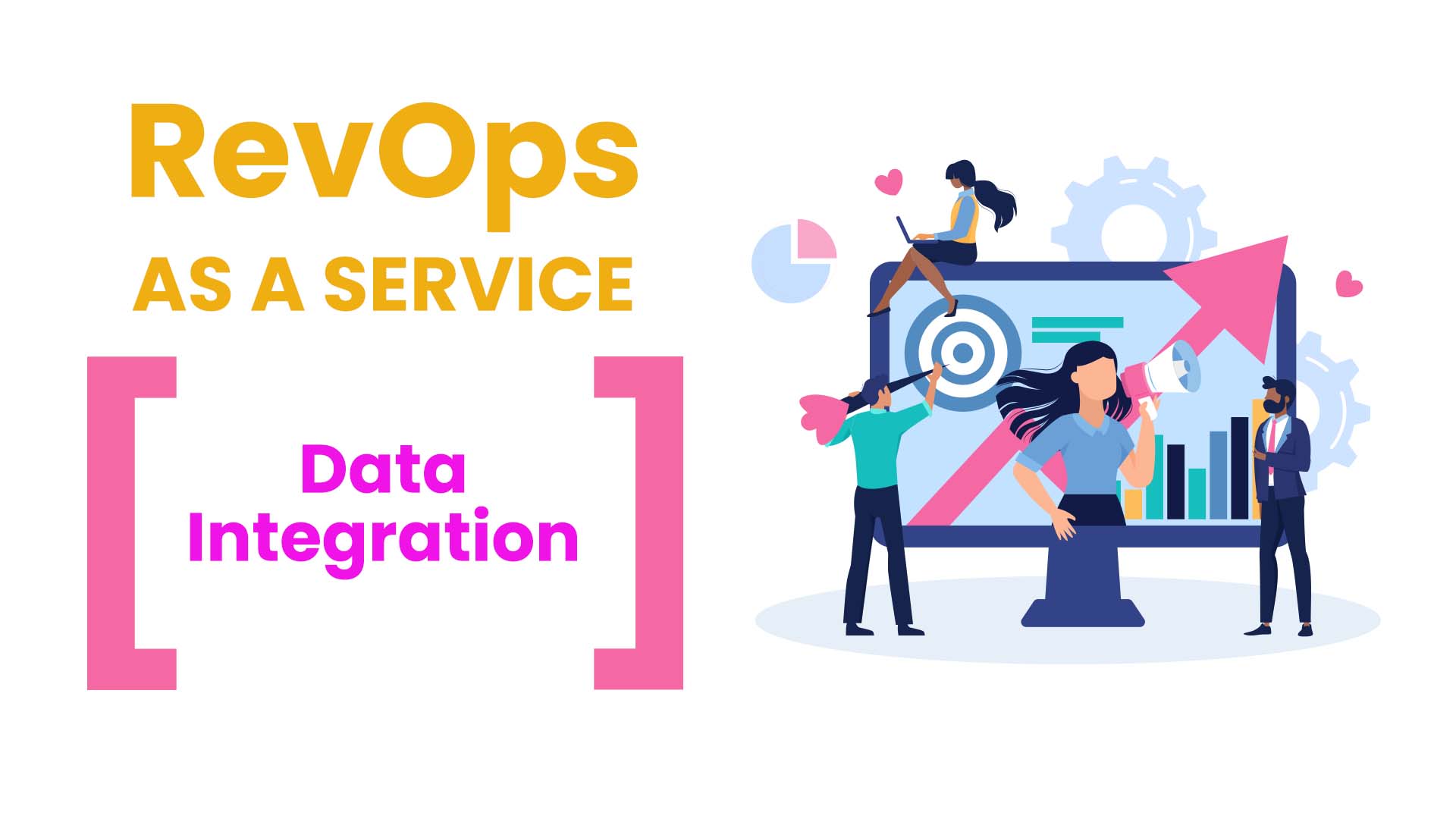In today's business landscape, data is king, and companies are constantly looking for ways to streamline their operations and gain a competitive edge. That's where RevOps comes in - the art of aligning sales, marketing, and customer success teams to maximise revenue growth. But with data spread across multiple systems and platforms, it can be challenging to integrate and make sense of it all. Enter "RevOps as a Service," a game-changing solution that is revolutionising the way businesses approach data integration. In this blog, we'll explore the benefits of RevOps as a Service and how it can transform your business operations.
Do I Really Need RevOps as a Service?
Revenue operations (RevOps) is a complex and multifaceted process that requires a deep understanding of the various functions that drive revenue growth. However, many businesses lack the time, resources, or expertise necessary to handle RevOps effectively. This is where RevOps as a Service comes in.
RevOps as a Service is a solution that allows businesses to outsource their revenue operations to a team of professionals who specialise in optimising revenue growth. These specialists have the necessary tools, expertise, and experience to streamline processes, identify areas for improvement, and implement effective strategies that drive revenue growth.
Just like hiring a local cleaning service to keep your house in tip-top shape, outsourcing revenue operations to a specialised team can be a game-changer for businesses looking to achieve optimal results. By partnering with RevOps experts, businesses can focus on their core competencies, while the specialists handle revenue operations with precision and efficiency.
RevOps as a Service is not just a one-time solution but an ongoing partnership that can deliver long-term benefits. With RevOps experts on board, businesses can stay ahead of the curve, optimise revenue growth, and adapt to changing market conditions. This is especially important in today's fast-paced and data-driven business landscape, where revenue growth is a critical component of success.
What is Data Integration?
Data integration is a crucial step in any organisation's data management strategy. It involves combining data from multiple sources, often with different formats, structures, and storage locations, to provide a unified view of the organisation's data assets.
In today's fast-paced business environment, where data is generated at an unprecedented rate, data integration has become more important than ever. It enables organisations to make informed decisions based on a comprehensive view of their data, which can lead to improved efficiency, cost savings, and better customer experiences.
However, data integration can be a complex and challenging process, especially when dealing with large volumes of data from disparate sources. It requires a high degree of technical expertise, sophisticated data integration tools, and a deep understanding of the different types of data integration, such as application integration, data warehousing, and ETL (Extract, Transform, Load) processes.
So, How does RevOps as a service cover Data integration?
RevOps as a Service is a holistic solution that covers various aspects of data integration. It brings together different teams such as sales, marketing, and customer success, and aligns them toward a common goal of revenue growth. With the help of RevOps as a Service, companies can streamline their data integration process, making it easier to access, process, and analyse data from multiple sources.
RevOps as a Service covers data integration through various tools and techniques. It offers automated data integration, where data is extracted from multiple sources, transformed, and loaded into a target system. This helps to reduce the time and effort required for manual data integration and also eliminates the risk of errors and inconsistencies that can occur when integrating data manually.
Another way RevOps as a Service covers data integration is through the use of APIs (Application Programming Interfaces). APIs provide a standardised way of accessing and transferring data between different applications and platforms. RevOps as a Service can leverage APIs to integrate data from different systems, enabling seamless communication between various departments.
By outsourcing data integration to a RevOps service provider, organisations can free up their in-house resources to focus on core business activities while benefiting from expert-level data integration services. RevOps as service providers have the technical expertise and specialised knowledge to handle even the most complex data integration projects, ensuring that organisations can make informed decisions based on accurate and timely data.
How is Data Integration different from Data Migration?
While data integration and data migration may seem similar, they are two distinct processes that serve different purposes. Some key differences are:
- Purpose: The primary purpose of data integration is to combine and transform data from multiple sources into a unified view, making it easier to analyse and use for decision-making. The primary purpose of data migration is to transfer data from one system to another during a system upgrade or a change in business processes.
- Frequency: Data integration is an ongoing process that may happen in real-time or at regular intervals, depending on the needs of the organisation. Data migration, on the other hand, is a one-time event that occurs when data is moved from one system to another.
- Scope: Data integration involves combining data from multiple sources, often with varying structures and formats, and transforming it into a consistent format. Data migration, on the other hand, involves moving data from one system to another, often with some data transformation involved to ensure compatibility between the systems.
- Complexity: Data integration can be a complex process, involving multiple data sources, complex data structures, and data transformation rules. Data migration, while it can be complex, typically involves a simpler process of moving data from one system to another.
- Tools and techniques: Data integration requires a range of tools and techniques, such as ETL (Extract, Transform, Load), APIs (Application Programming Interfaces), and data warehouses. Data migration, on the other hand, typically involves tools such as migration scripts, data mapping tools, and data cleansing tools.
Why is it Important?
A dependable data integration solution can ensure data consistency, connect disparate systems, and enable cross-functional reporting. This process can occur at any stage of the data model, unlike other data-related processes.
Through data integration, organisations can seamlessly combine data from different sources into a single, consistent format. This allows for better data analysis and decision-making, as well as improved communication and collaboration between different departments.
What results to expect
Once your RevOps as a service team has completed the data integration process, you can expect to have a seamless flow of information between all integrated systems. This will ensure that all data mappings are implemented as required and that both mono-directional and bi-directional syncs are identified and implemented to provide a reliable and efficient integration.
One of the critical aspects of a successful data integration project is ensuring that all existing data in both systems are reconciled to avoid data loss or duplication. This process ensures that all data from the source and target systems are accurately represented in the integrated system.
A well-executed data integration project will also include the identification and implementation of triggers. These triggers ensure that the integration fires automatically when the specified conditions are met, creating a dynamically-updating integration that eliminates the need for manual updates.
Furthermore, by implementing a reliable data integration process, your team can expect to have access to accurate and up-to-date data across all systems. This makes it easier to create reports, analyse data, and make informed decisions. With a RevOps as a service team leading the way, you can rest assured that your data integration project will be executed flawlessly, resulting in a smooth flow of information and increased productivity for your business.
Real Inbound is at Your Service
Looking to take your business to the next level and achieve unparalleled success? It's time to say goodbye to "just good enough" and embrace a winning attitude. What you need is the ultimate solution for achieving executive precision across your entire funnel and synchronising your revenue processes to support multiple go-to-market plans.
So, if you're ready to take your business to new heights, don't wait any longer. Book a discovery call with us today and let us show you how Real Inbound can help you achieve your goals and exceed your expectations. It's time to win – let us show you how.






 Tammy Duggan-Herd
Tammy Duggan-Herd